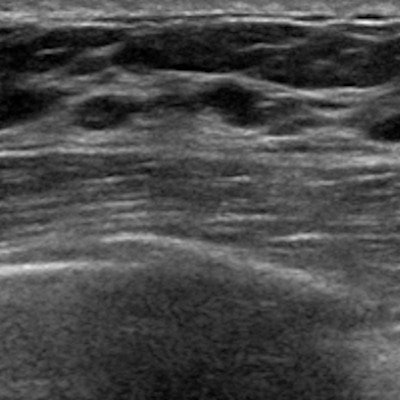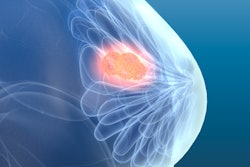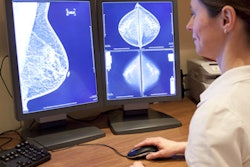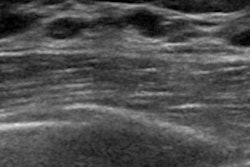
Using computer-aided diagnosis (CAD) with breast ultrasound improves the diagnostic performance of both less-experienced and experienced breast imagers, according to a study by researchers from South Korea that was published in the January issue of Medicine.
The results show that breast ultrasound is a useful diagnostic tool for improving the performance of radiologists in general -- and that it boosts performance in specific ways depending on reader experience, wrote a team led by Dr. Hee Jeong Park of Seoul National University Bundang Hospital.
"Based on our results, CAD assistance could be useful as a second opinion for making the final decision and in improving diagnostic performance of radiologists, regardless of level of experience," the group wrote. "However, the type of benefit would be different between the less-experienced and experienced radiologists."
A valuable tool
Breast ultrasound is considered a valuable adjunct to mammography for diagnosing breast cancer, and its use has increased in recent years, Park and colleagues noted.
"Ultrasound is an easily available, inexpensive imaging tool, without the accompanying risk of radiation, and therefore there has been an expansion in indications for the use of breast ultrasound, including serving as an adjunctive screening tool to mammography, for preoperative staging, follow-up after cancer treatment, and interventional diagnosis," the researchers wrote.
But the diagnostic accuracy of the modality is tied to the skill and experience of the operator. Research has demonstrated that using CAD with ultrasound can mitigate user variability, yet there have been few studies examining how CAD affects the diagnostic performance of readers with differing breast imaging experience (Medicine, January 2019, Vol. 98:3, p. e14146).
Park's team investigated the value of a CAD program applied to diagnostic breast ultrasound based on operator experience. The group used ultrasound images of 100 breast masses acquired from 92 women between May and June 2015; three less-experienced (first-year fellowship trainees) and two experienced (eight to 10 years) breast imaging radiologists analyzed the ultrasound features of the breast masses without and with CAD, using BI-RADS categories.
The researchers then compared the diagnostic performance of the two groups of readers, tracking the following measures: sensitivity, specificity, negative predictive value (NPV), positive predictive value (PPV), and area under the receiver operating characteristic curve (AUC). They also compared interobserver variability across all the readers.
Of the 100 breast masses, 41% were malignant and 59% were benign. Overall, CAD helped less-experienced readers improve their diagnostic performance across all measures, while it improved the specificity and positive predictive value of the experienced readers.
| Effect of CAD on performance of breast ultrasound readers | ||||
| Performance measure | Less-experienced readers | Experienced readers | ||
| Without CAD | With CAD | Without CAD | With CAD | |
| Sensitivity | 65.9%-87.8% | 85.4%-97.6% | 85.4%-92.7%* | 90.2%* |
| Specificity | 27.1%-50.8% | 23.7%-66.1% | 52.5%-54.2% | 66.1% |
| NPV | 53.3%-76.2% | 86.7%-94.7% | 83.8%-91.4% | 90.7% |
| PPV | 38.6%-51.7% | 47.1%-63.6% | 55.6%-58.5% | 64.9% |
| AUC | 0.623-0.759 | 0.823-0.839 | 0.856-0.889 | 0.904-0.907 |
The study also showed significant improvement in interobserver variability among all readers, among less-experienced radiologists, and between experienced radiologists for all ultrasound features (p < 0.001).
Leveling the field
CAD offers a way to mitigate variability among radiologists for diagnostic breast ultrasound -- thus boosting the modality's usefulness, according to Park and colleagues.
"CAD is a useful additional diagnostic tool to improve the diagnostic performance in all radiologists with different benefits for radiologists with different levels of experience in breast imaging," the group concluded. "It may be helpful in refining lesion descriptions and in making management decisions, such as the need for biopsy and determination of clinical strategy."




















